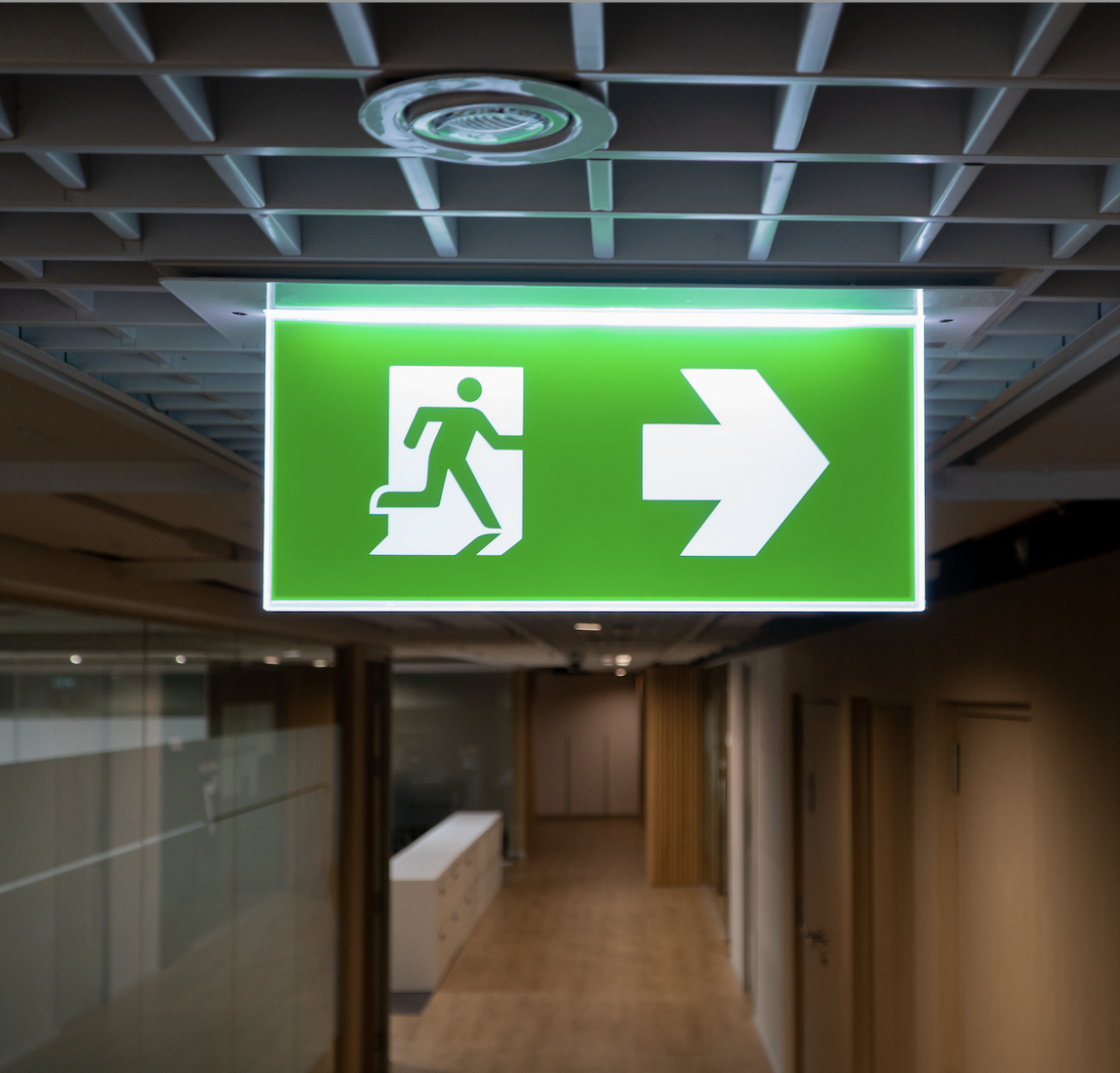Emergency Lighting Services – Ensuring Safe Evacuation
Emergency lighting is a critical component of fire safety, providing illumination when standard lighting systems fail due to power outages or emergencies. At East Coast Fire, we specialise in the design, installation, and maintenance of emergency lighting systems that comply with UK regulations, ensuring safe evacuation routes for all building occupants
Emergency Lighting Services – Ensuring Safe Evacuation
Emergency lighting is a critical component of fire safety, providing illumination when standard lighting systems fail due to power outages or emergencies. At East Coast Fire, we specialise in the design, installation, and maintenance of emergency lighting systems that comply with UK regulations, ensuring safe evacuation routes for all building occupants.
Importance of Emergency Lighting
In the event of a power failure or fire, visibility can be severely compromised, making it challenging for occupants to navigate to safety. Emergency lighting systems automatically activate, illuminating escape routes, exits, and safety equipment, thereby facilitating prompt and safe evacuation. UK regulations mandate that all occupied buildings, both commercial and residential, are equipped with adequate emergency lighting to ensure occupant safe

Emergency Lighting Services – Ensuring Safe Evacuation
Emergency lighting is a critical component of fire safety, providing illumination when standard lighting systems fail due to power outages or emergencies. At East Coast Fire, we specialise in the design, installation, and maintenance of emergency lighting systems that comply with UK regulations, ensuring safe evacuation routes for all building occupants.
Importance of Emergency Lighting
In the event of a power failure or fire, visibility can be severely compromised, making it challenging for occupants to navigate to safety. Emergency lighting systems automatically activate, illuminating escape routes, exits, and safety equipment, thereby facilitating prompt and safe evacuation. UK regulations mandate that all occupied buildings, both commercial and residential, are equipped with adequate emergency lighting to ensure occupant safety.
Our Emergency Lighting Services
Design & Installation
Our experienced engineers conduct comprehensive assessments of your premises to design bespoke emergency lighting systems tailored to your building’s layout and specific requirements. We install high-quality, compliant lighting solutions that ensure all escape routes and safety equipment are adequately illuminated during emergencies.
Maintenance & Testing
Regular maintenance and testing are vital to ensure the reliability of emergency lighting systems. Our services include:
- Monthly Functional Tests: Performing brief tests to confirm that all emergency lights activate correctly.
- Annual Full Duration Tests: Conducting comprehensive tests to ensure lights operate for the required duration, typically three hours, as specified by BS 5266-1:2016.
- Preventative Maintenance: Identifying and rectifying potential issues before they become critical, ensuring continuous compliance and functionality.
- Detailed Reporting: Providing thorough reports documenting test results, any faults detected, and remedial actions taken, assisting you in demonstrating due diligence.
Emergency Safety Signage
Proper signage is an integral part of an effective emergency lighting system. We supply and install:
- Illuminated Exit Signs: Clearly marking escape routes and final exits to guide occupants to safety.
- Safety Equipment Indicators: Highlighting the locations of fire extinguishers, call points, and other essential firefighting equipment.
- Photoluminescent Signage: Providing visibility in low-light conditions without relying on electrical power.
Compliance with UK Standards
Our emergency lighting solutions adhere to the BS 5266-1:2016 code of practice, ensuring that all systems are designed, installed, and maintained to the highest standards. We assist you in fulfilling your legal obligations under the Regulatory Reform (Fire Safety) Order 2005, providing peace of mind that your premises are safe and compliant.
Why Choose East Coast Fire?
- Expertise: Over 30 years of experience in fire safety and emergency lighting solutions.
- Quality Assurance: Utilising top-tier equipment and adhering to stringent quality standards.
- Comprehensive Service: Offering end-to-end solutions from design and installation to ongoing maintenance and testing.
- Customer Focus: Tailoring our services to meet the unique needs of each client, ensuring satisfaction and compliance.
